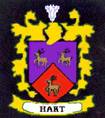

COURSE OUTLINE
1. Basic concepts used in historical geology
a. Stability of natural systems
b. Evolutionary sequence
c. Time
d. Actualism
e. Geological models and Combinatorial Outcome.
2. Earth in cosmic perspective
a. Origin and composition of our Universe
b. Origin of the solar system
3. Origin of Life
a. Cellular classification of life
b. Chemistry of the cell
c. Molecular hierarchy
d. Evolutionary schema
e. Life in our Universe
4. Classification, systematics and taxonomy of organisms
a. Fossilization
b. Classification of fossil organisms
c. Kingdom Protista
d. Kingdom Plantae
e. Kingdom Animalia
5. Biological Evolution
a. Major steps
b. Mechanism of evolution
c. Process of evolution
d. Molecular evolution
e. Concept of a species
6. The terrestrial plants
a. Necessary adaptations
b. Evolutionary development
7. The Chordates
a. Hemichordata
b. Chordata
c. Australopithecus, Homo and the future.
8. Sedimentology
a. Major characteristics of sediments
b. Classification of sediments
9. Areal analysis
a. The nature of environments, ecology and geography
b. Physical chemical and biological components affecting the environment
c. The depositional environment
d. Walther' Law and Facies concept
e. Depositional sequences
10. Temporal analysis
a. Depth and geometric geology
b. Time and historical geology
c. Case studies
a. The geological history of North America
b. The geological history of Europe
c. The geological history of Russia
d. The geological history of Southern Africa
e. The geological history of India
II. Course Reading
The purpose of the lecturer is to provide a basis for understanding a particular topic from which the student can learn, and to stimulate the students imagination. The class notes were prepared to encapsulate the essential parts of the lectures. There is no single textbook recommended for this course. Students are encouraged to supplement the lecture information with selected readings from others sources such as textbooks, encyclopedia, Scientific America etc.
III. Examinations
The teaching assistant assigned to this course has one prime duty which is to sit in the class room and make notes on the major topics covered in each lecture. After each class he is required to provided the lecturer with a set of questions each of which concerns a major point covered in the lecture. The accumulated set of questions is then used as a pool from which to select the examination questions. This method is used to ensure that the student is questioned on what the lecturer talked about. Students may not have access to the teaching assistants notes! The secondary role of the teaching assistant is to arrange for the distribution and computer grading of the examinations.
Three examinations are given during the semester as follows.
1. Before mid-term 100 points
2. At or slightly after mid-term 100 points
3. Final 200 points.
All Make-up examinations are given on the same evening
The score received on any particular examination is adjusted to a mean of 70% prior to generating the examination curve. This is to ensure that each examination has the same measure of difficulty. The final grade is based on the sum of the scores not the average grade. At least twelve and one half percent [12.5%] of the initial number enrolled in the class will receive an A grade. The average final grade is a B [compared with elementary Physical Geology which is a C]. The method of grading used in this class is based on a cumulative curve of over 6,000 students to whom I have taught beginning geology: including in some cases your mother, father, uncle or aunt! A student who shows consistent improvement over the three examinations can break the grading system [i.e. a higher grade may be given if the lecturer believes it is justified]. This will only be done after the grades of all other students are assigned, in order that they are not penalized.
Each student will be assigned a specific seat in the auditorium for examinations. These assignments will be made immediately after the final class list is available. The student must sit in this assigned seat for each examination because photographs are taken of the whole class at each examination to verify attendance. This is necessary in order to avoid any doubt about whether a student did or did not take an examination in the event of a discrepancy. Spot checks are made of the I.D. of some students during each examination. This is done to prevent sit-ins. The general philosophy of the examination procedure is to ensure a fair examination in which every student is treated honestly.